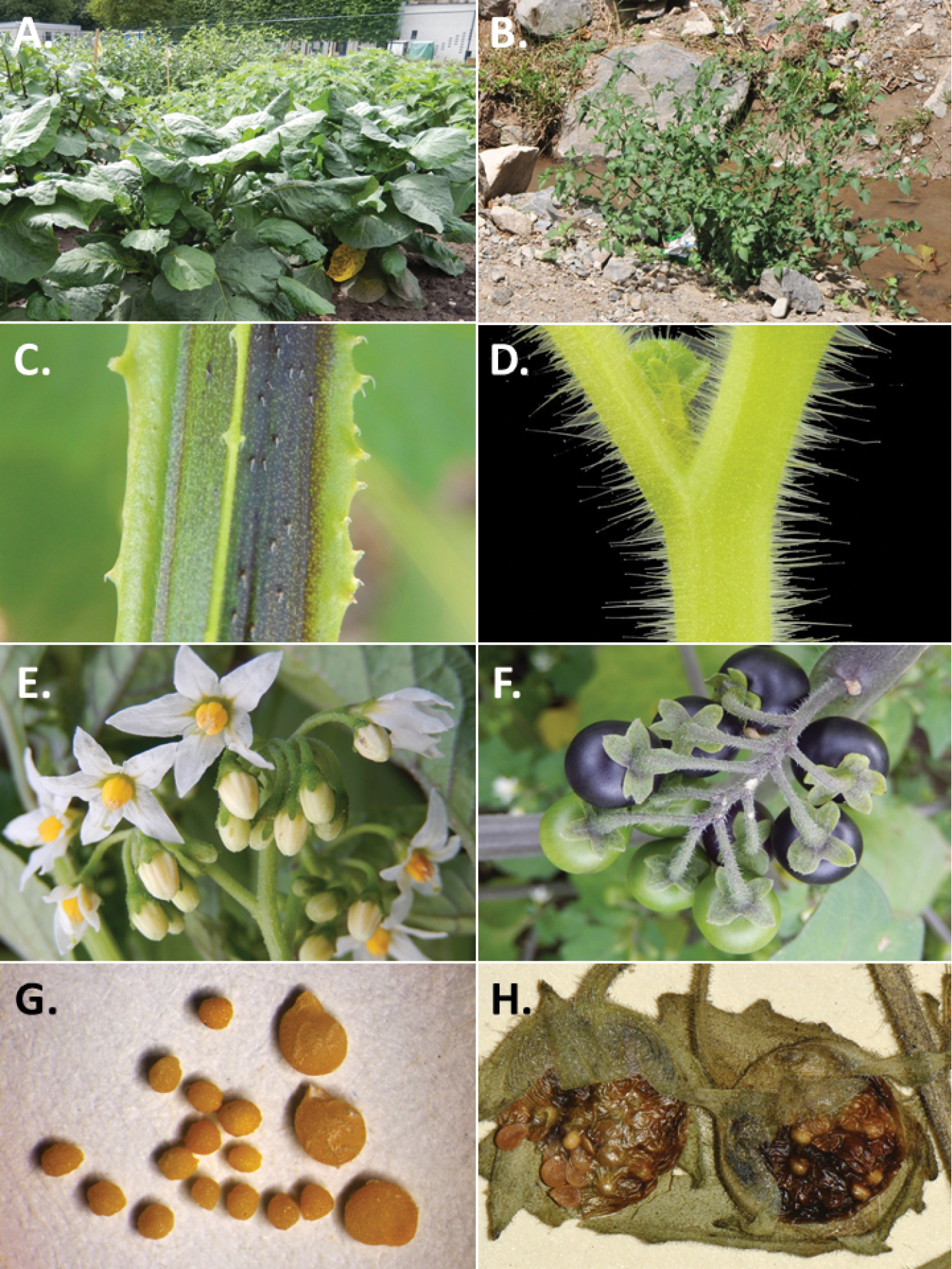
|
||
|
Morphology of the Old World species of the Morelloid clade of Solanum A Many species are cultivated for leaves and fruits (S. scabrum, NIJ994750012) B Most species show preference of disturbed, dry habitats in the wild (S. americanum, Knapp et al. 10210) C Strongly ridged and often purple coloured stems present in many species (S. tarderemotum, NIJ 2010-5) D Glandular hairs present in some species of the Morelloid clade (S. memphiticum, A34750473) E Typical stellate, white flowers with spreading or reflexed corolla lobes (S. tarderemotum, A14750151) F Fleshy round berries that are black, green, yellow, orange or red depending on the species (S. nigrum, A44750150) G Stone cells (also known as sclerotic granules or brachysclerids) are found in the fruits of most species of the Morelloid clade and are round in shape as compared to the tear-drop shaped or ellipsoid seeds (S. umalilaense, A24750133) H Stone cells are often easy to see in herbarium specimens (e.g. S. sarrachoides, Blom s.n. BM001207745). Photos by S. Knapp and G. van der Weerden. |